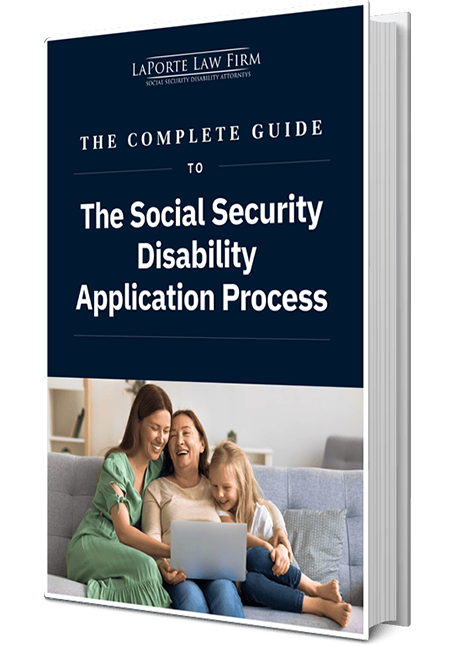
Have you ever wondered how your Social Security benefits are calculated and what might cause them to change over time? Understanding these adjustments can be crucial for planning your financial future, especially if you’re relying on these benefits as a significant portion of your income after you retire or are no longer able to work due to a disability.
While many people know the basics of how Social Security Disability Insurance (SSDI) benefits work, few are aware of the various factors that might trigger a recalculation of benefits. These recalculations can occur due to changes in your earnings record, adjustments for inflation, or revisions to contributions, among other reasons.
Whether you’re considering a claim for SSDI benefits or already receiving benefits, it’s important to be aware of the circumstances under which the Social Security Administration (SSA) may recalculate your benefits. This knowledge will empower you to make informed decisions and ensure that you receive the correct amount. Let’s explore when and why these recalculations happen and how they could impact you.
Understanding Benefit Calculation
Social Security Disability Insurance is a federal program that provides monthly financial benefits to people who are unable to work due to a mental or physical disability and who have paid into Social Security through prior work. The amount you receive from SSDI is based on your average lifetime earnings from jobs where you paid Social Security taxes. In general, the more you’ve paid into Social Security through taxable income, the higher your monthly SSDI benefit will be.
To calculate your monthly benefit amount, the Social Security Administration first calculates your average indexed monthly earnings (AIME). Your AIME is the average of your monthly earnings during your working years, adjusted for inflation, so older earnings reflect their value in today’s dollars. Up to 35 years of earnings are needed to compute your AIME. The SSA looks at your highest-earning years, totals those earnings, and divides that number by the number of months in those years.
The SSA uses your AIME to calculate your primary insurance amount (PIA). Your PIA is the amount you’ll get in monthly SSDI payments if your case is approved. They do this using a three-part formula with set “bend points” that change each year. For 2025, the formula works like this: you get 90% of the first $1,226 of your AIME, 32% of the amount between $1,226 and $7,391, and 15% of anything over $7,391. These amounts are then added together to determine your PIA. The formula favors lower earners, so a higher percentage is applied to the first part of your AIME, and smaller percentages are applied to higher portions.
The most recently available data from the SSA shows that the average monthly SSDI benefit is $1,537.13. In 2025, the maximum SSDI benefit amount is $4,018 per month. To calculate your benefit amount, you can use the SSA’s Online Benefits Calculator. You may also see your benefit summary statement, which contains your SSDI benefit amount, by creating an account on SSA.gov.
Understanding Benefit Recalculation
In some situations, SSDI benefits can be recalculated, meaning the amount you receive each month could change based on certain factors. For example, if you return to work and earn income, if you receive other government benefits, or if there’s a cost-of-living adjustment (COLA), your monthly SSDI payment might go up or down.
Understanding these rules is important for financial planning because changes in your benefits can affect your overall income, budgeting, and even your eligibility for other support programs. Knowing what can impact your SSDI payments helps you make smarter decisions about work, savings, and future expenses.
Factors Influencing Recalculation
The SSA considers these factors to determine if your SSDI benefits should be adjusted:
Cost-of-living adjustments
A cost-of-living adjustment, or COLA, is an annual increase in Social Security retirement and SSDI benefits. The SSA calculates the COLA based on the Consumer Price Index for Urban Wage Earners and Clerical Workers (CPI-W), which measures changes in the cost of goods and services. These goods and services include food, housing, transportation, and medical care that typical households buy or spend money on. The SSA compares the average CPI-W from the third quarter (July–September) of the current year to the same period of the previous year. This adjustment is meant to keep up with inflation so your SSDI benefit doesn’t lose value as prices rise.
The COLA is typically announced in October each year and goes into effect in January of the following year. For example, if a COLA is announced in October 2025, the increase would begin with January 2026 payments.
COLAs have been applied almost every year since they were first introduced in 1975. However, some years, such as 2010, 2011, and 2016, there was no COLA because inflation was too low to trigger an increase.
Earnings from continued work
Working and earning income while receiving SSDI can affect both your current eligibility and your future benefit amounts.
Working while on SSDI must be carefully managed because the SSA sets strict rules about how much you can earn at substantial gainful activity, or SGA, without affecting your disability benefits. In 2025, if you are not blind, earning more than $1,620 per month before taxes is considered SGA. If your earnings go over these limits, the SSA may decide that you are no longer disabled under their rules, and your SSDI benefits could be stopped.
However, the SSA offers a trial work period (TWP), during which you can test your ability to return to work without losing your SSDI benefits, no matter how much you earn. The TWP allows you to work for up to nine months (not necessarily consecutive) within a 60-month rolling period. Any month in which you earn more than a certain threshold (in 2025, it’s $1,160 per month) counts as a trial work month.
For more information about the TWP, check out our blog post on the topic.
Your work activity may also affect your SSDI benefit amount. SSDI is based on your average lifetime earnings before your disability, so if you continue to work while on SSDI, the income you earn may later be included in your earnings record. Your PIA uses your average income from the 35 years when you earned the most, adjusted for inflation. If you continue to work and you earn more than you did in the previous 25 years, your benefits may increase.
Receipt of other public disability benefits
If you receive other public disability benefits, such as workers’ compensation benefits or short-term disability benefits, your SSDI benefit may be reduced. This reduction will occur if the combined amount of your SSDI benefits and other public disability payments is more than 80% of what you used to earn before your disability. In this case, the SSA will reduce your SSDI benefit to bring the total back down to the 80% level. This is known as the “offset rule.” The reduction only applies while you’re receiving both types of benefits at the same time. Once the other public benefit ends, your full SSDI benefit is restored.
For more information on reductions due to the receipt of public disability benefits, check out our blog post on the topic.
Clerical errors
Social Security Disability benefit calculation mistakes are rare, but they do occur. This can be due to a computational or clerical error that may occur from inaccurate information contained in your earnings history statements. If you believe that you were overpaid or underpaid, you should first consult your earnings history statement. This isa record of the year-by-year listing of the SSA’s record of how much you made over your career, which is the foundation for calculating your benefit amount. Your earnings history statement can be found on your SSA.gov account.
Initiating a Recalculation
There are several ways your SSDI benefit amount may be recalculated. Some occur automatically, while others require action on your part to correct or update your earnings record.
Automatic recalculation
In most cases, your SSDI benefit is automatically recalculated. This is typically done on an annual basis. For example, the cost of living adjustment is automatic. You do not need to apply for a COLA adjustment. Recipients are notified by mail and through their My Social Security online account
If you have additional earnings that affect your SSDI benefit, the SSA will automatically recalculate your benefit amount. If your benefit amount changes because of this update, the SSA will send you a letter explaining the new monthly amount and the reason for the adjustment. You can also view any changes through your My Social Security online account.
Reporting wages to the SSA
As mentioned, the SSA will automatically recalculate your benefit amount to account for additional earnings. However, if you’re receiving SSDI and working, it’s important to report your wages to the SSA. You should report your earnings as soon as you start working and continue to report your gross monthly income (before taxes) each month. You’ll need to provide details such as your employer’s name, start date, and any work-related expenses tied to your disability (known as Impairment-Related Work Expenses). Wages can be reported by calling the SSA, visiting a local office, mailing or faxing pay stubs, or, in some cases, using your My Social Security account.
Proper reporting ensures the SSA can track your work activity, apply any necessary adjustments to your benefits, and protect you from having to repay overpaid benefits. It also helps ensure that any increase in future SSDI payments, due to higher earnings, is applied accurately.
Request a recalculation
If you believe that the SSA made a clerical or an administrative error in calculating your benefit amount, you should consult your earnings history statement. If your earnings history statement contains any errors, you should correct your Social Security earnings record with the SSA. You can do this by contacting your local SSA office.
If your earnings are missing from your record, you must obtain and submit proof of your earnings to the SSA. The proof can include a W-2 form, tax return, pay stub, or other wage records. If you do not have any documents of these earnings, you must provide the SSA with your employer’s name, the dates you worked, how much you earned, and the name and Social Security number you used when you worked.
If you’re unsure whether your SSDI benefits are being calculated correctly, contact LaPorte Law Firm. Our experienced team can help you understand your earnings record and ensure accurate benefit payments.
FAQS
The SSA typically recalculates benefits on an annual basis, usually to account for changes like cost-of-living adjustments (COLA). However, benefits may also be recalculated at other times if there’s a miscalculation or clerical error.
Yes, working can affect the recalculation of SSDI benefits. If you return to work and continue paying Social Security taxes, the SSA may recalculate your benefits to include your new earnings, especially if those earnings are higher than previous years included in your benefit calculation. This can potentially increase your monthly SSDI benefit.
However, working above certain income limits may also trigger a review of your disability status or initiate a trial work period (TWP), which can eventually impact eligibility if you earn more than the substantial gainful activity (SGA) limit for an extended period. To learn more, review our article on working while receiving Social Security disability benefits.
Yes, changes in the cost of living can impact your Social Security benefit through an annual COLA. If inflation causes the cost of goods and services to rise, the SSA may increase your monthly benefit to help maintain your purchasing power.
To find out if your Social Security benefits have been recalculated, you can check your My Social Security account online, which provides access to your personalized statement, including your earnings history and benefit estimates. Each December, the SSA mails COLA notices, which are also available in your online account’s Message Center. If you have concerns about your benefits or suspect an error, contact the SSA directly by phone or visit a local office for assistance.















